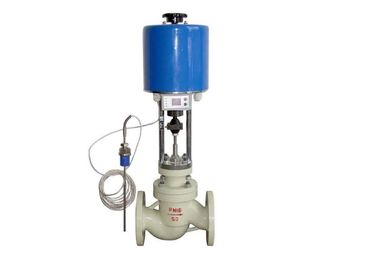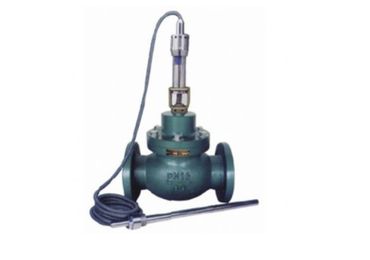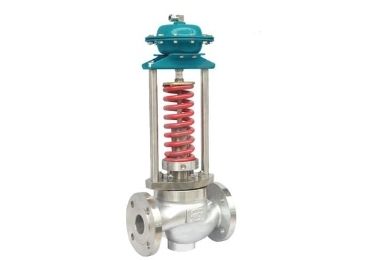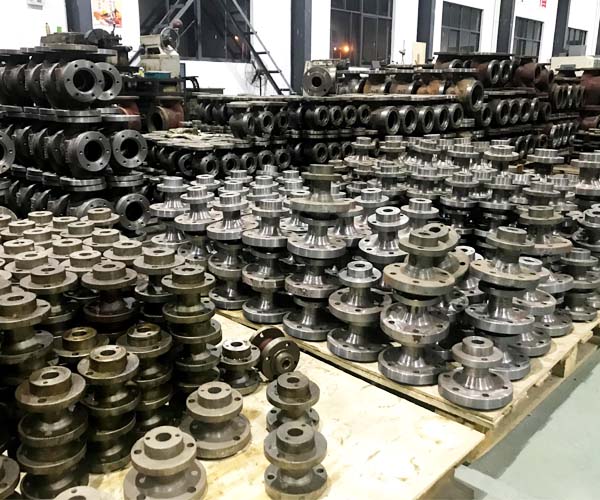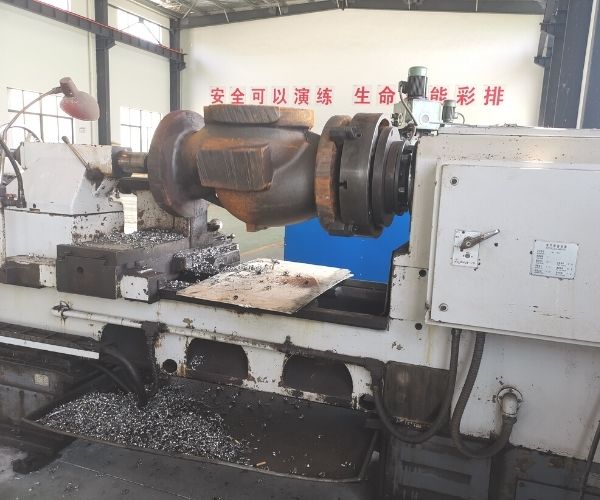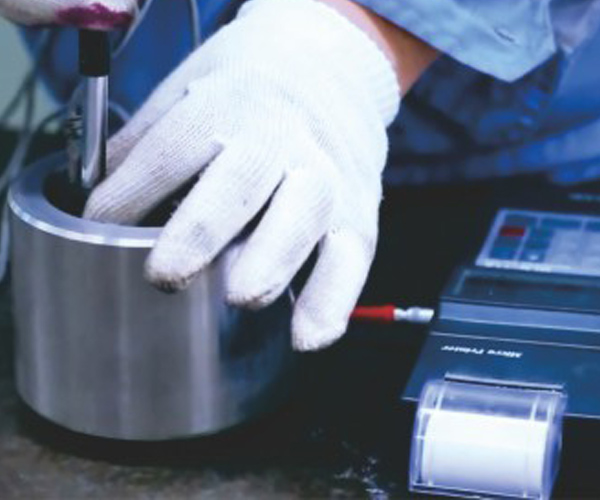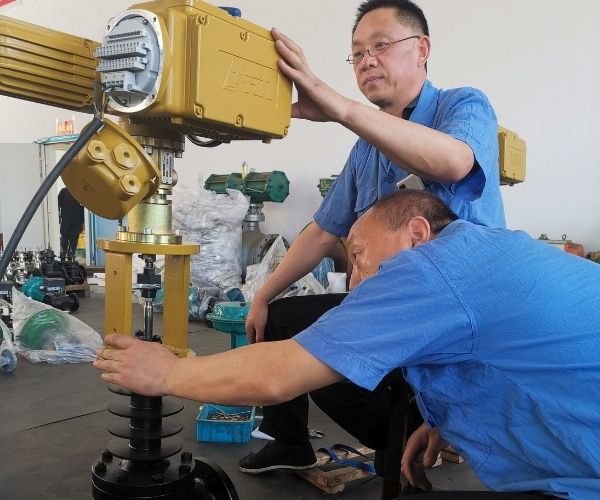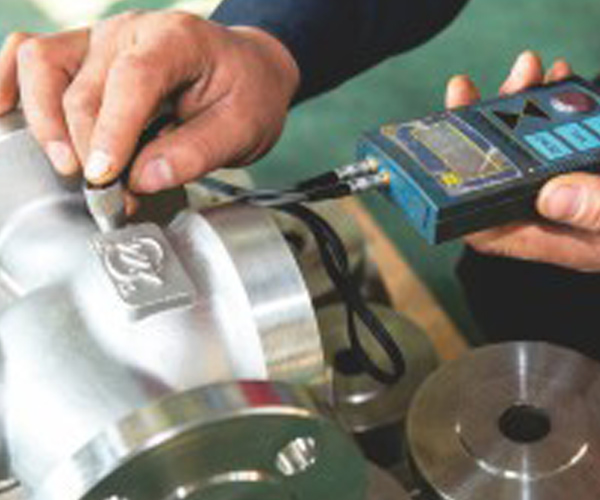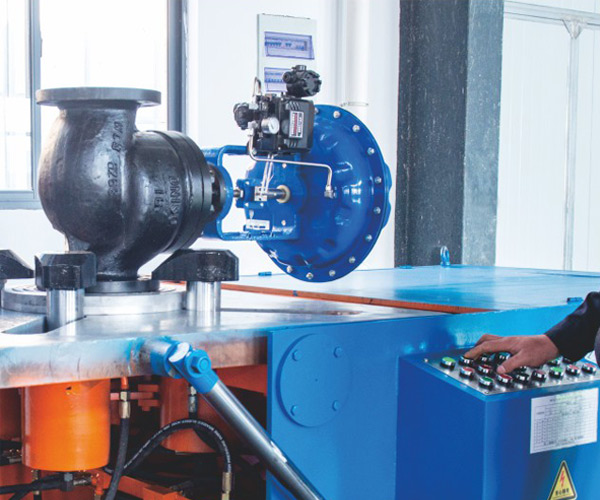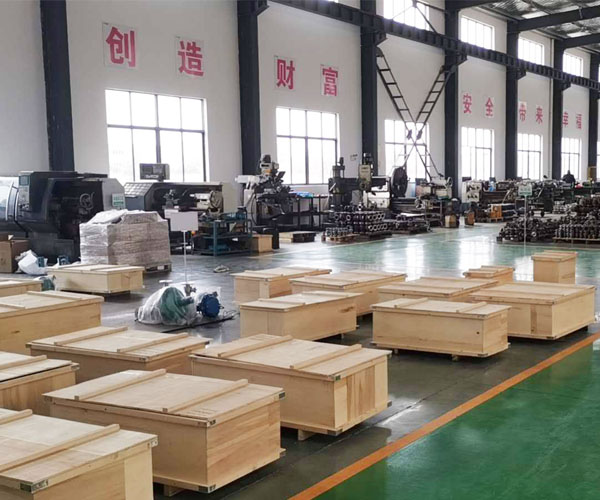Professional Temperature Control Valve Manufacturer
●Rapid and powerful functioning.
●Durable provider life.
●Compact design.
●Minimal pressure-drop.
Get in Touch with Us
A Reliable Temperature Control Valve Supplier In China
BCST temperature Control Valves are used to manipulate the fluid temperature in turbines, compressors, and engine jacket water and lubrication oil cooling structures. They are appropriate for procedure manipulate and business programs wherein fluids should be combined or diverted to reap most fulfilling temperatures.
BCST - A Top Rated Temperature Control Valve Suppliers In China
BCST temperature manipulate valves are appropriate for procedure manipulate, maritime, and business programs wherein fluid should be combined or diverted to reap most fulfilling temperatures. A temperature manipulate valve can also be carried out to cogeneration structures to manipulate temperatures inside the restoration loop, assuring the right engine cooling and maximizing warmth restoration. All to assist to offer the procedure with the most fulfilling temperature and consequently save you highly-priced downtime.
Give us a message at [email protected] to help you select the right valve on your application.
BCST Your One Stop Temperature Control Valve Solution Supplier
BCST is one amongst the leading reliable and stable temperature control valve manufacturers in China. If you’re searching for an experienced manufacturer for your next project, with strong technical background, professional team, and budget-friendly products, BCST is your most suitable choice.
BCST can provide different products supported customers’ requests. From packaging to delivery, you’ll receive BCST’s most detailed service. BCST’s technical team will provide you with professional guidance during usage or installation. With ATEX, ISO, SIL2, RoHS, and CNEX, BCST will provide you high-quality temperature control valves at a competitive price.
Drop us an email for your inquiry now!

BCST Temperature Control Valve Quality Control
Get the Latest Catalogue Now!
Why Purchase Temperature Control Valve From BCST
Temperature Control Valve -FAQ
What are the types of temperature control valve?
· Self-actuated temperature control valve:
The main components of the self-actuated temperature control valve are the thermostat and control valve. This temperature control valve is applicable for corrosive liquids, steam, liquid and gas, mainly in the cooling system, to control the temperature. Whenever the temperature of the charging medium rises, the control valve gets closed. It is highly effective and efficient and delivers a high accuracy rate. It is entirely safe and reliable to use the self-actuated temperature control valve.
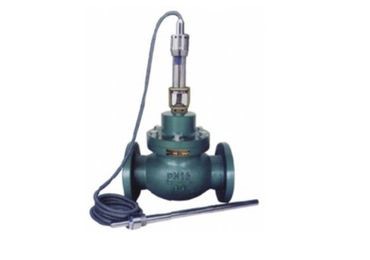
· Self-regulated temperature control valve:
The self-regulated temperature control valve doesn’t need any power supply and is best suitable for regulating the temperature in the tanks, processing of the streams, and different kinds of equipment. It is made of casting aluminium acting single/double seat or reversely.
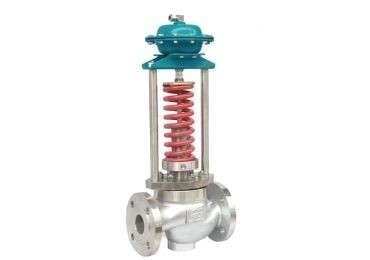
· Electric temperature control valve:
An electric temperature control valve is the application of electrical flow inside the control valve to control the temperature. The main working principle of the electric temperature control valve is to control the temperature at the outlet of the equipment through the control of the inlet flow of the exchanger of heat. Or unit of air conditioning or any hot/cold medium. Whenever there is a change in the load, the flow rate automatically adjusts by changing the opening of the electric temperature control valve to eliminate the impact caused by the changes in the load. At last, there is the restoration of the temperature for setting the value.
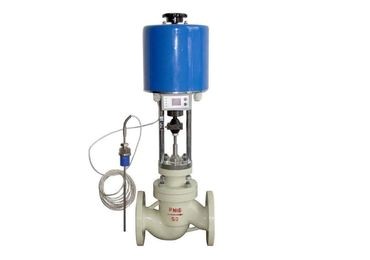
What are the troubleshooting issues in the temperature control valve and solutions relevant to it?
Problems | Causes | Solutions |
Difficult to adjust the temperature of mixed water or unable to set the valve | · The temperature of the inlet is not within the limits · The reversal in the supplies of hot and cold · Debris inside the strainers and valves | · Always make sure that the temperature of the inlets is within the range of the valve · Fit the valve again inside the supplies of hot/cold along with accurate connectivity · Flush out the water throughout the valve · Cleaning of all the strainers is essential |
Instability in the mixed temperature | · Fouling of the strainers · Fluctuations in the supplying of the pressures | · Clean out all the strainers · Installation of the valves for reducing the pressure on the inlets of cold and hot for the moderation of the valve |
Changing the mix temperature with the passage of time | · Changes in supplying pressure · Debris inside the strainers | · Installing the valves to decrease the pressure · Cleaning of all the strainers |
Only hot or cold flows from the tap | · The setting of the valve in an incorrect manner · The ability of hot or cold water to cross towards the other outlet
| · Adjusting the mixed temperature between 50 degrees Celsius to 65 degrees Celsius according to the requirement · Keep checking the non-return valve if case it gets fouled and clean it needs cleaning · |
No flow from the outlet of the valve | · Failure in the supply of hot or cold water · Blockage in the strainers | · Restoration of the supplies inside the inlets and checking the temperature of the inlet |
Fluctuations or reductions in the rate of flow | · Blockage in the valves or filters of inlet · Variations in the supplying pressure | · Flush or clean all the valves as per requirements · Installation of valves for reducing the pressure |
No changing of the temperature of mixed water during adjustment of the valve | · Reversal supplies of hot and cold water | · Fit the valves again along with the supplies of hot and cold in a correct manner |
Cross flowing of cold or hot water into one another | · Reversed supplies of hot and cold | · Fitting of the valves again |
The valve becomes noisy | · The high velocity of water | · Decrease the velocity of water that you achieve by fitting the pressure reducing valves |
How can you maintain the temperature control valve?
- As the recommendation, you must check the temperature control valve once every year to ensure that it is working correctly. If you install the temperature control valve and some unknown water quality, it is essential to check the temperature control valve more often.
- There can be changes in the temperature of the water from the temperature control valve due to the seasonal changes in the supply of cold water
- You need to access the strainers for cleaning purposes through the extensive size union connections of the temperature control valve
- If the quality of the water supply is low, then the strainer of the temperature control valve can block. Install an extra strainer or filter on the cold and hot inlets of the temperature control valve
- The servicing of the temperature control valve isn’t possible. You can’t disassemble the temperature control valve, and don’t try for it. There is the possibility of removing the strainers for cleaning purposes and snapping on the cap.
- Always consider the temperature control valve the safety valve, so it is better to replace it at intervals not more than 5 years.
What are the specifications of the temperature control valve?
The temperature of the cold water supply | 5 degrees Celsius to 25 degrees Celsius |
The temperature of the hot water supply | 65 degrees Celsius to 99 degrees Celsius |
Range of adjusting the temperature of the outlet | 50 degrees Celsius to 65 degrees Celsius |
Factory setting temperature of temperature control valve | Approximately 65 degrees Celsius |
Accuracy of outlet temperature | 3 degrees Celsius |
The minimum difference between the temperature (between the temperature of the outlet and the hot water supply) | 15 degrees Celsius |
Static supply of pressure | Maximum 1600kPa |
Dynamic supply of pressure | Maximum 500kPa |
Unbalancing the pressure supply | 2:1 ratio maximum |
Permitting the changes of the pressure for controlling the temperature at the outlet for supplying the pressure at the outlet | Maximum 10% |
The minimum flow rate of the temperature control valve | 4 litres per minute |
The maximum flow rate of the temperature control valve | 23 litres per minute |
How can you adjust the temperature in the temperature control valve?
- As a priority to adjusting the temperature control valve, switching on the hot water supply heater is essential and delivering according to the recommended temperature. If there is an adjustable thermostat, set the thermostat to 65 degrees Celsius. Ensure that the water heater is that specific temperature before fixing the temperature control valve.
- Test the mixing water temperature at the closest outlet supplied by the temperature control valve. It would help if you opened the tap to permit the rate of flow minimum of 4 litres per minute.
- You need to use the thermometer at the outlet nearest to the temperature control valve to make sure that you have achieved the required temperature of the mixed water
- Permit the water to run once a minute to settle the mixed water temperature after adjusting it every time.
- To adjust the temperature of the temperature control valve at the outlet, remove the cap to increase the accessibility towards adjusting the spindle. Use some of the unique tools you need to install and change the spindle to receive the required temperature. You need to rotate it clockwise direction to increase the temperature. Anti-clockwise for decreasing the temperature to reach the necessary temperature.
- After commissioning the temperature control valve, the installer must label the commissioning and fix it with the water heater at a suitable position.
What are the features and benefits of using a temperature control valve?
- You can easily integrate the temperature control valve and match it with the size of the pipe
- The design of the temperature control valve is highly flexible as all the ports are easy to configure depending on the requirements of your installation
- The whole set-up of the temperature control valve is simple to operate and maintain
- Suitable for the coolers, condensers and heaters of the products
- Preheating of the fuel and lube oil
- Most of the refineries, chemical production and production of oil use temperature control valve
- Durability and reliability
- The design of the temperature control valve is compact enough
- Pressure drop in the temperature control valve is at a minimum level
- All the functions of the temperature control valve are powerful and quick
Why is it essential to control the temperature?
It is necessary to control the fluids’ engine’s temperature regarding the particular equipment’s efficiency and performance. According to the application, failure to maintain the temperature accuracy can lead to less fuel consumption and high emissions as the output. You must purchase the temperature control valve from leading manufacturers like BCST.
Applications using the temperature control valve:
· Jacket Water (HT):
The water temperature of the jacket has an impact on the consumption of fuel and the efficiency of the engine. In this application, it is very important to maintain the temperature for accepting the load as the low temperature can cause cold corrosion that leads to slow steaming. As an additional benefit, you can quickly recover the wasted heat from the innovative valve technology, which helps improve the system’s efficiency.
· Chargeable Air Cooler (LT):
The chargeable air cooler is equipped with control valves, including a temperature control valve. It is for setting the high to medium temperature. The whole structure is built-in along with the highly-efficient coil. It also has a significant impact on the engine’s performance, and different kinds need various temperatures for air inlet depending on the combustion in the correct way. Additionally, you need to control the dew point to reduce the corrosion, optimise the fuel consumption, and reduce the spark in the plug that may foul inside the gas engines.
· Lube oil:
In this application, the inaccurate temperature of the oil can affect the viscosity in a negative manner and the characteristics of the flow. It can lead to the wearing of the engine.
Who are the manufacturers of temperature control valve?
Several countries are the manufacturers of the temperature control valve. It includes the United Kingdom, India and China. Being China on the top, BCST has served the manufacturing industry for more than 22 years. There is a significant impact on the engines from the temperature control valve by BCST. It helps manipulate the temperature of the fluids present in the engine jacket water, compressors and turbines. BCST has established its name as the company that always offers a variety of products such as temperature control valve and many more. You can choose accordingly depending on your industrial application.
Which factors to consider while selecting the temperature control valve?
The temperature control valve facilitates with the simple methodology regarding the controlling of the fluids’ temperature. It is very important to operate the industrial machineries and processing equipment. The use of temperature control valve is mostly in compressors, turbines, engine jacket water and lubricating the oil in the cooling systems. So, take a look the factors that are helpful in selecting the right temperature control valve for your application:
· Flow rate:
First and foremost, thing is the consideration of the required flow rate for determining the size of temperature control valve.
· Actuation method:
You need to consider the requirements of your applications and objectives when making the decision regarding selection of temperature control valve or actuated control valve.
Self-actuation (including the temperature control valve) | Externally actuated valves (solution to bring improvement in the processes) |
Only one time setting of the temperature | Flexibly adjusting the temperature |
Standard temperature range of the control valve | Precisely controlling the temperature |
No need of any additional parts | Involvement of whole system including temperature sensor and controller |
Completely mechanical | It needs pneumatic or electrical source for activation purposes |
· Body material:
Every material works in a best manner in various applications.
- Cast ironàthe usage is generally for the oil systems, water and glycol
- Aluminumàthe cost is low and services suitable for high pressure
- Ductile ironàstrength is more than steel at economical pricing and best suited for marine applications
- Stainless steelàresistant to corrosion at highest level
- Bronzeàsuitable for salt water applications
- Steelàhigh level of strength and pressure rating
· Configuration of the flow:
The temperature control valve performs good in both diverting and mixing applications.
1) Diverting applications:
When you use the temperature control valve for diverting services, the connection of the inlet is with the temperature sensor port and port B along with the cooler by passing the line.
2) Mixing applications:
When you use the temperature control valve for mixing purposes, you can use the C port as the inlet port for the cold fluid coming from the cooler. Port B is inlet for the hot fluid and the common outlet is Port A. The port A is the port for sensing the temperature and later it will mix both cold and hot fluids in the accurate portions. This will produce the required temperature at the outlet that exits from the Port A.

